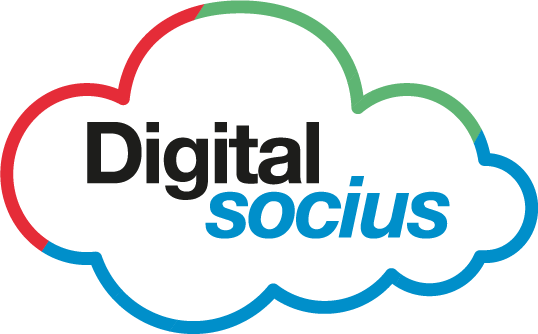The best way to streamline HR processes involves a strategic approach that combines technology adoption, process analysis, and employee engagement.
Businesses today are increasingly adopting HR software to manage a spectrum of activities, from recruitment and onboarding to performance management and payroll processing. This shift not only accelerates processes but also provides valuable insights through data analytics, transforming HR from an administrative function to a strategic business partner.
The effective management of processes is crucial for organizational success. Thus, streamlining HR processes with digital tools has emerged as a transformative approach, bringing efficiency, accuracy, and enhanced employee experiences.
In this article, we will delve into the intricacies of streamlining HR processes, explore the digitization of HR, and understand the pivotal role technology plays in this paradigm shift.
How do you streamline processes in HR?
Streamlining HR processes involves the strategic simplification and optimisation of tasks, ensuring a smoother flow of operations. The integration of digital tools allows for the automation of routine tasks, reducing manual efforts and minimising errors. From recruitment and onboarding to performance management and payroll, streamlining involves identifying relevant bottlenecks and implementing solutions for a more efficient workflow.
What is digitization of HR processes?
Digitalization, according to gartner.com, is the use of digital technologies to change a business model and provide new revenue and value-producing opportunities; it is the process of moving to a digital business.
Therefore, the digitization of HR processes entails the conversion of traditional paper-based and manual tasks into digital formats. This shift leverages technology to manage, store, and analyze HR-related data.
It encompasses various aspects such as electronic document management, automated workflows, and the adoption of cloud-based systems. Digitization empowers HR professionals to access information swiftly, enhance collaboration, and make data-driven decisions.
What is the role of technology in streamlining HR processes?
Technology plays a pivotal role in streamlining HR processes by offering a suite of tools designed to simplify tasks and improve overall efficiency. From applicant tracking systems (ATS) for recruitment to integrated HR management platforms, technology enhances communication, data management, and analytics. Real-time access to information, automated workflows, and AI-driven insights are instrumental in optimizing HR operations.
What are digital HR tools?
Digital HR tools encompass a range of software applications designed to facilitate various HR functions. These tools include, but are not limited to, HR management systems, payroll software, employee engagement platforms, and performance management tools. These apps use automation, analytics, and integration to make processes more efficient. This lets HR professionals focus on bigger projects instead of small, repetitive tasks.
Recruitment and applicant tracking
– Introduction of Applicant Tracking Systems (ATS) for seamless candidate management
– Automation of resume screening and interview scheduling.
Employee Onboarding
– Digital onboarding platforms for a paperless, efficient induction process.
– E-learning modules for employee training.
Performance Management
– Performance management software for continuous feedback and goal tracking.
– Integration of 360-degree feedback tools.
Time and attendance tracking
– Automated timekeeping systems to minimize manual errors.
– Integration with payroll for accurate compensation.
Payroll Automation
– Streamlined payroll processes for timely and error-free payments
– Compliance management through automated tax calculations.
A quick example of streamlining processes
Let us consider the recruitment process as an example of streamlining HR processes. Traditionally, recruitment involved manual resume screening, interview scheduling, and communication. With digital tools like ATS, the entire process becomes automated. Resumes are scanned for keywords, interviews are scheduled through integrated calendars, and communication with candidates is streamlined through email automation. This not only accelerates the hiring process but also enhances the candidate experience.
Benefits of Digitalization in HR Processes
The digitalization of HR processes brings a multitude of advantages to the workplace, significantly impacting efficiency and overall organizational success. Here are key benefits to consider:
Efficiency Gains
The integration of digital tools and automation in HR processes leads to substantial efficiency gains. By automating routine and time-consuming tasks, such as data entry and document management, the HR team can redirect their efforts towards more strategic and value-added activities. This not only saves time but also optimizes resource utilization, making the workflow smoother and more productive.
Data Accuracy
One of the prominent advantages of digitalization is the minimization of errors associated with manual data entry. Automated HR systems ensure that data is consistently accurate and up-to-date. This not only reduces the risk of inaccuracies in employee records, payroll, and compliance but also enhances the reliability of the HR function. Accurate data is foundational for making informed decisions and maintaining regulatory compliance.
Enhanced employee experience
Digitalized HR processes contribute significantly to creating a positive employee journey within the organization. By streamlining various HR activities, from onboarding to performance management, employees experience a more efficient and user-friendly interaction with HR systems. This, in turn, enhances their overall experience, making them feel supported and valued. A positive employee experience is vital for employee retention, engagement, and overall satisfaction.
Strategic Decision-Making
Data analytics, a key component of HR digitalization, provides valuable insights that empower HR professionals to make informed and strategic decisions. Analyzing data related to employee performance, engagement, and other HR metrics enables organizations to identify trends, anticipate challenges, and implement proactive strategies. This data-driven approach enhances the effectiveness of HR strategies, contributing to the overall success and growth of the organization.
Overcoming Challenges in HR Digitalization
While HR digitalization brings a host of benefits, it is not without its challenges. Understanding and proactively addressing these challenges is key to a successful digital transformation. Here’s how you can overcome some common hurdles:
Data Security Concerns
Challenge: Protecting sensitive information is a top priority, and digitalizing HR processes raises concerns about data security.
Solution: Implementing robust security measures is paramount. This involves encryption protocols, access controls, and regular security audits. HR professionals should collaborate closely with IT teams to ensure that sensitive HR data, such as employee records and payroll information, is safeguarded against unauthorized access or cyber threats.
Integration Issues
Challenge: Seamless integration of new digital tools with existing HR systems is often a challenge, leading to disruptions in workflows.
Solution: Prioritize compatibility and integration capabilities when selecting HR software. Work closely with vendors to ensure that the chosen solution can seamlessly integrate with existing systems. Consider phased implementations to minimize disruptions, allowing for thorough testing and adjustments during the integration process.
Employee Resistance
Challenge: Employees may resist the changes introduced by HR digitalization due to unfamiliarity or concerns about job security.
Solution: Effective communication is key. Clearly communicate the advantages of digitalization, emphasizing how it will simplify processes, enhance efficiency, and contribute to a more streamlined work environment. Provide comprehensive training programs to familiarize employees with the new tools and address any concerns they may have. Involving employees in the decision-making process and highlighting the benefits of their daily tasks can also mitigate resistance.
By proactively addressing these challenges, organizations can pave the way for a smoother and more successful HR digitalization journey. As technology continues to evolve, staying vigilant and adaptable is crucial for ensuring that the benefits of digitalization are maximized while minimizing potential disruptions and concerns.
Training and Upskilling HR Teams
Investing in the training and upskilling of HR teams is paramount. Provide hands-on training on the implemented HR software, emphasizing its functionalities and demonstrating how it enhances their roles. Additionally, continuous learning programs keep HR professionals updated on the latest trends and features of HR software.
Conclusion
The digitalization of HR processes through the implementation of HR software is not just a technological upgrade but a strategic move towards a more agile and efficient HR function. As businesses evolve, adopting digital solutions becomes imperative for staying competitive.
By overcoming challenges, investing in training, and reaping the benefits of digitalization, HR professionals can propel their roles from administrative tasks to strategic leadership, contributing significantly to organizational success. HR software is not just a business tool; it is essential for the success of your HR department.
If you would like help in getting started with digital tools for your HR team, we have the rights applications for you. Contact us right away and we’ll help set up your team on the right path.




0 Comments